Poland 2020
Poland - A beautiful Country full of Surprises
At the end of September, I decided to travel to Poland for a spontaneous trip full of adventures and delicious food. For me, it was the first time to visit our neighbour country and home country of my ex-girlfriend - Poland. The tour started with a long journey by car, until we arrived in Karpacz, a spa town, close to the border to the Czech Republic.
After a bit of relaxing time, we started a short hiking tour to the Vang Stave Church, which was originally built around 1200 in the Norwegian parish of Vang and re-erected in 1842 - after it was bought by King Frederick William IV of Prussia - at its contemporary place in Karpacz. It's one of the 30 authentic stave churches - 28 are preserved stave churches in Norway - and for me as a fan of Scandinavian culture and history, it was a place, I definitely wanted to see.
The next morning, we already started our hiking trip quite early. Our destination was the summit of the Śnieżka mountain, the highest mountain of the Karkonosze mountains (Giant Mountains). After paying the entrance fee for the national park, our hiking adventure started with a very steep and stepped path through the forest. When the forest path ended, we had a wonderful view of the valley and the surrounding trees, from where we heard a roar of an animal, which sounded like a bear.
After having a little coffee and sandwich break, we continued the path to the summit, passing some beautiful wild flowers and fly agarics in the nature. At the top of the mountain Skalny Stół, we had the feeling, that the most exhausting part of the route was done, but unfortunately, the final kilometres up to the Śnieżka mountain were really hard again. But when we reached the observatory at the summit, we were really relieved and satisfied. The view was breathtakingly - especially with the fantastic rock cliffs and the wide forest.
The way back to Karpacz started with a slippery stone-stepped path to the "Schronisko Dom Śląski" hotel, our last point for making a refreshment break. Since we went back on a different route, we could also see the mountain from another perspective. Shortly before being back in Karpacz, we could see a wild waterfall. It was the perfect end of an amazing hiking experience.
After having a great hiking trip, it was time to leave Karpacz. But before driving to Wroclaw, we wanted to visit Zamek Książ - in German "Schloss Fürstenstein" - the largest castle in the Silesia region and third largest castle in Poland.The castle, also known as the "Gate to Silesia", because of its strategic importance in securing the trade routes from Silesia to the Czech Republic, was built between 1288 and 1292 by the Silesian duke Bolko I the Strict on a 400 metre high rock on the edge of Wałbrzych and is surrouded by a large park area, where we also made a walk after the round tour inside of the castle, which was definitely worthwile to visit also for learning more about Polish history.
In the evening, we arrived in the city of Wroclaw, the historical capital of Silesia on the banks of the Oder river. Since it was already dark, we just walked to the Old Town for having dinner, but on our way, we already could see some of the dwarfs, which make the city unique.
The next morning, we started our sightseeing tour and in my opinion, Wroclaw was the most beautiful city in Poland. Every corner of the city was interesting and also felt so familiar. We walked along the pedestrian zone until we arrived at the main square of the city - the medieval Market Square. It's one of the largest market squares in Europe and with its colorful houses and the Gothic style Old Town Hall definitely one of the most beautiful ones. After exploring the old town, we wanted to visit the Aula Leopoldina, named after the Austrian Emperor Leopold, who founded the university of Wroclaw in 1702. But unfortunately, the Aula was closed due to renovation works, but we still had the chance to inspect the Baroque Oratorium Marianum and the exhibition rooms of the university. At the end, we ascend to the top of the Mathematical Tower, from where we could catch a glimpse in the direction of the Gothic St. Elizabeth's Church.
Then, we walked along the bank of the Oder river. We had a wonderful view of the Cathedral Island - Ostrów Tumski - the oldest part of the city, while doing an ice cream break. After the break, we went to the Cathedral of St. John the Baptist, one of the main landmarks of Wroclaw. The church was erected between 1244 and 1344 in a Gothic and Neo-Gothic style and is the seat of the Roman Catholic Archdiocese of Wroclaw. Close to the cathedral, our last stop of our sightseeing tour was the beautiful Botanical Garden, a true paradise for nature lovers and relaxation with more than 7.500 different kinds of plants and flowers.
Our sightseeing tour in Wroclaw was combined with searching the Wroclaw Dwarfs. Since 2005, the number of the dwarfs have been continually growing and until now, there are already more than 600 of those bronze statues in the whole city. It was really funny to see a lot of different kind of the dwarfs, in every corner and sometimes hidden in narrow streets or on lanterns. According to popular belief, the dwarfs belong to the guardian spirit and the virtue of most dwarfs is based on helping people with housework and increasing their fortune. But the dwarfs also symbolize the society. For example, the dwars represent various professions and they stand for important statement like "Votes for Women". At the end, we found 175 dwarfs all around the city, so it's a sign, that we need to come back to Wroclaw to continue searching the little dwarfs.
The next city, we visited, was the city of Poznan, the fifth-largest and one of the oldest cities in Poland. Unfortunately, it rained the most of the time during our time in Poznan, but nevertheless, we had a great time, exploring the beautiful Old Market Square, which was almost completely destroyed during World War II, but also successfully restored and nowadays one of the main tourist attractions in the city. In the centre of the square was the Poznan Town Hall, which was rebuilt by Giovanni Battista di Quadro between 1550 and 1560 and is one of the most valuable Renaissance monuments in Central Europe. Other famous buildings on the square are the "Golden Lion Pharmacy" from the early 19th century and the former residence of the town hall builder, now a literature museum dedicated to Henryk Sienkiewicz, on the west side as well as the only two houses from the late Middle Ages and the Renaissance palace of the Górka family from 1549, now the Archaeological Museum, on the east side. In the evening, we went to the restaurant "Wiejskie Jadło", where we tried many typical delicious Polish dishes - such as potato pancakes with goulash and sour cream, beef roulades with grits and beetroot or Bigos, a dish of chopped meat of various kinds stewed with sauerkraut and fresh cabbage.
For the next day, we planned to travel to Gdansk, but since the weather wasn't better, we decided to stay in Poznan for one more day and night. So, we had the chance to explore some parks of the city and the Imperial Castle of Poznan, which was built under German rule in 1910 in a Neo-Romanesque style, as well as the Gothic-Romanesque Royal Castle, which was constructed in the 13th century and largely destroyed during World War II.
The next day, we had a long journey again, travelling to Warsaw, the capital of Poland and the birthplace of my ex-girlfriend. Since we arrived late at my girlfriends parents house, we spend the rest of the evening with having dinner and playing Polish card games.
The next morning, we woke up early to explore the city. At the beginning, I thought, that Warsaw isn't such a beautiful city, but I was really surprised about all the beautiful park areas and the picturesque Old Town, which represents examples of almost every European architectural and historical style and is a UNESCO World Heritage Site since 1980. The first highlight, when we entered the old town was the castle square and the Royal Castle, the former royal residence of the Polish monarchs, which was completely reconstructed after the detonation during World War II. Then, we continued our tour and visited the historical and geographical centre of the old town - the Market Square "Rynek" - where we enjoyed the beautiful view of the market from the Southern side and then followed the street to the Warsaw Barbican, erected in 1540 and one of the few remaining relics of the complex network of historic fortifications that once encircled the city.
After exploring the Old Town, we made a five kilometre walk - passing the Palace of Culture and Science - for having a picnic in the Łazienki Park amidst many cute squirrels. It's the largest park area in Warsaw and has many interesting places to visit, for example the classicist Palace on the Isle or the historical monuments of Fryderyk Chopin and Henryk Sienkiewicz. We enjoyed the rest of the afternoon in the green area, and before we went back home, we decided to eat pierogis in the restaurant called "Zapiecek", where they not only served savoury - for example filled with mushrooms, oscypek, meat - but also sweet pierogis with fresh blue berries and vanilla sauce or filled with chocolate and cream cheese. After a delicious dinner, we explored a few corners of Warsaw at night, before we returned home.
Our next destination was Zakopane. After five hours, we arrived at our hotel at the foot of the Tatra Mountains close to the border to Slovakia. During our stay in Zakopane, we had the plan to go hiking twice. The first day, we wanted to explore the 1.987 metre high Kasprowy Wierch, the most visited peak of the Western Tatras. Since it was rainy and foggy the whole day, we decided to take the cable car to the summit of the mountain, but when we arrived there, it was even more foggy and we couldn't enjoy the beautiful highland view of the Tatra. It was also too dangerous to hike back, because it wasn't possible to see the path, so we also went back to Zakopane by cable car and explored the city for the rest of the day.
For the second day, we planned to hike to the Morskie Oko, the largest and fourth-deepest lake in the Tatra Mountains. But we didn't have luck with the weather again, so that we cancelled this hiking route for this time. Instead, we visited the Oscypek Museum, where we learned a lot about the history of the cheese in Zakopane and the production of the smoked cheese made of salted sheep milk. For me, especially the second part of the presentation was really interesting. Since the guide only talked in Polish, I was quite happy, that my girlfriend could translate everything for me.
It wasn't only interesting to learn about the cheese production in the Tatra Mountains, the Oscypek cheese was a real culinary highlight of our holidays in Poland. We ate the Oscypek cheese in many variations at the restaurant called "Karczma Zapiecek" - Oscypek with cranberries, pierogis filled with Oscypek and my highlight, a platter of different cheeses from the region. So at the end, we definitely enjoyed the time in Zakopane, even if we couldn't go hiking, like we planned before.
Funnily enough, the weather on our departure day was much better again, so we had at least a relaxed car ride to Krakow. But before we arrived in Krakow, we took the chance to visit the German-speaking guided tour at the Wieliczka Salt Mine. The Wieliczka Salt Mine is now an official Historic Monument with a total depth of 327 metres and includes the shafts and labyrinthine passageways, displays of historic salt-mining technology, many statues carved out of the rock salt, an underground lake and four chapels.
After descending the steps to enter the mine at the first level at around 64 metres under the earth, we started to wander around the corridors of the impressive underground workings. Interestingeley, only two per cent of the approximately 245 kilometre tunnel system is accessible for visitors. The highlight of the mine was the St. Kinga's Chapel - the world's biggest underground church - and a unique work of sculptor miners.
In Krakow, we enjoeyed the last day of our trip to Poland. The city of Krakow was the official capital of Poland until 1596 and is nowadays the second-largest city of the country. Numerous buildings from the Gothic, Renaissance and Baroque shape the picture of the Old Town. The highlight of the historic centre are the marvellous Royal Castle on the Wawel Hill, built at the behest of King Casimir III the Great, and the Wawel Cathedral, where Polish monarchs were crowned and buried. It was definitely the most beautiful place to hang out in Krakow, especially with the green and flowery area.
With the establishment of new universities and cultural venues like the largest medieveal market square in Europe - the Rynek Główny - Krakow reaffirmed its role as a major national academic and artistic centre. The main place for arts was around the last preserved city gate of the Krakow city wall - St. Florian's Gate - where artists presented and sold their paintings. Krakow is also known as student city, so that there are also a lot of foreign students, but the internationality was also perceptible by many international restaurants, so for our last dinner in Poland, we decided to visit a Taiwanese restaurant called "Kuku Taiwanese Food & Bubble Tea" in the Old Town of Krakow, after watching the sunset at Wawel Hill.



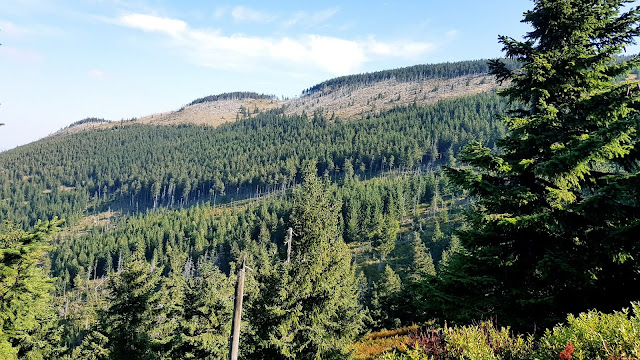






















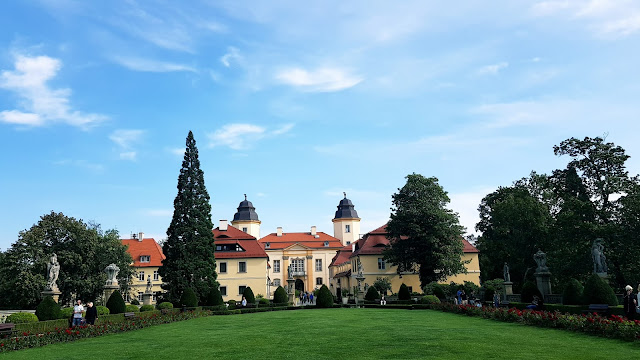

























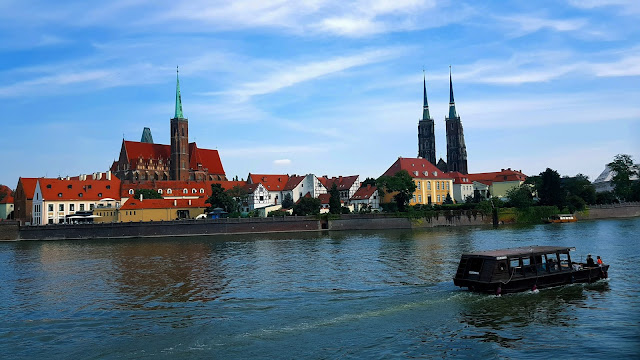





















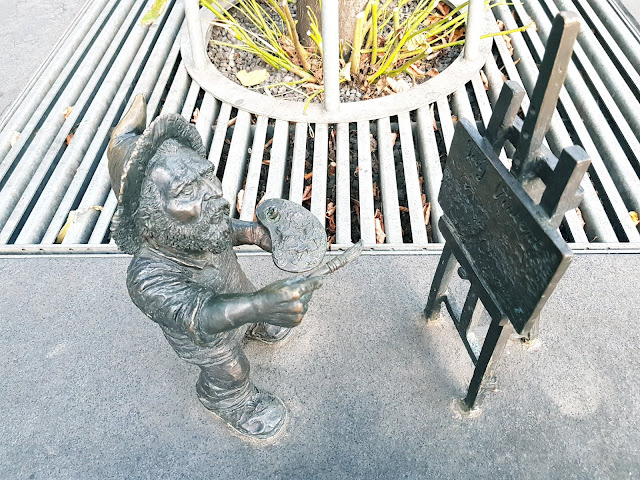




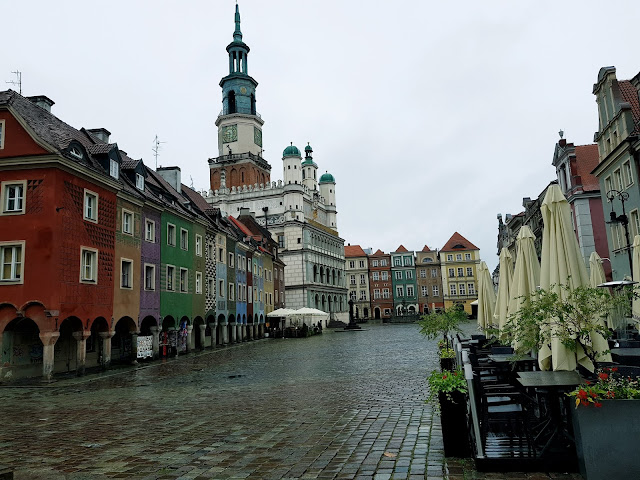










































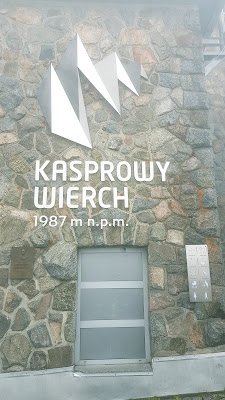













































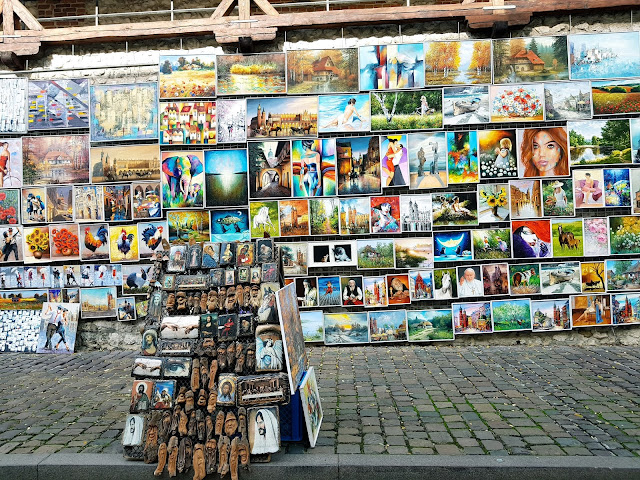



Comments
Post a Comment